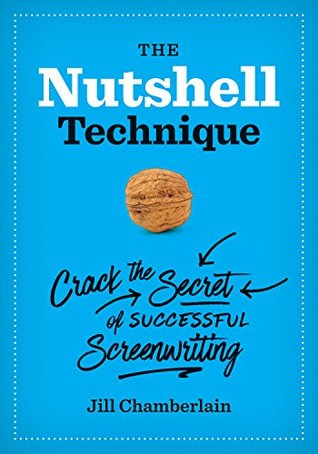Kindle Notes & Highlights
Read between
August 6 - August 7, 2019
The solution lies in story structure.
most difficult
most imp...
This highlight has been truncated due to consecutive passage length restrictions.
Identifying a central flaw in your protagonist is an essential component of screenplay story structure.
In this reversal, the protagonist will go from wanting to achieve one specific goal in their first scene to the exact opposite state of mind or situation at their lowest point at close to 75% into the
running time.
the second reversal starts at the beginning of the change of fortune for the protagonist
and it ends in their last scene.
In an Aristotelian comedy, this change of fortune takes the protagonist from their lowest point at around 75% in the running time to their usually happy ending in the very end. Simultaneous to their reversal of fortune from bad to good, the protagonist changes and makes a personal reversal from their central flaw to its polar opposite: the personal strength they learn in the end.
It’s about getting to these eight key elements that make up the spine of your story, your story at its most essential.
Technique, the protagonist is going to be determined by looking at the characters’ relationships to their central FLAWs.
the protagonist is the one who makes the most significant change in terms of their central FLAW, and they learn its opposite in the end—their STRENGTH—
In a tragedy, the protagonist is the one who fails to change from their FLAW more significantly and therefore fails to gain their potential STRENGTH in the end,
the POINT OF NO RETURN happens to the protagonist,
This will be a rare instance when you should
use the passive voice.
don’t write the POINT OF NO RETURN like this: “Bourne opens a safe-deposit box which reveals that he is Jason Bourne and has multiple passports, a gun, and cash.” A better way to write it, for our purposes, is this: a safe-deposit box reveals he’s Jason Bourne ...
This highlight has been truncated due to consecutive passage length restrictions.
is something external happening to the protagonist and not something they simply choose to do one day.
We need an external POINT OF NO RETURN to happen and change the course of events in our protagonist’s life one day.
The CATCH is usually a part of the POINT OF NO RETURN itself and does not require any additional scenes.
The Nutshell CATCH happens
before the break into Act 2.
the POINT OF NO RETURN must give the protagonist their WANT and also bring them a CATCH, sometimes what comprises the full POINT OF NO RETURN may stretch over a couple of scenes and even be made up of two or three connected events.
Think of the CATCH as me asking you to spell out your answer to my question: in the POINT OF NO RETURN your protagonist got their SET-UP WANT, but what did they get that they didn’t want?
If you don’t have a CATCH, then you’ve just given your protagonist exactly their WANT, and there’s no longer any conflict.
CATCH really need to happen before page 30, and they shouldn’t happen before page 20.
meaning the POINT OF NO RETURN might begin around 0:22:00,
Putting these two together was not a random decision. This is not merely a situation. This, truly, is a story.
Don’t mistake the SET-UP WANT for your protagonist’s deeper, overall “want,” or their motivation or overall objective as a character.
So when you are establishing the SET-UP WANT, you have a bit of leeway as far as what constitutes the protagonist’s first dialogue scene.
Ultimately, the SET-UP WANT is simply the WANT in the first dialogue scene that works the best with the POINT OF NO RETURN and the CRISIS/TRIUMPH.
Juno’s SET-UP WANT is to save something that is being discarded. Ah-ha!
You can consider the possibilities after identifying the POINT OF NO RETURN, but only after the CRISIS or TRIUMPH has been determined can you know the SET-UP WANT with certainty.
although the CATCH will ultimately lead the protagonist to the STRENGTH in the very end in an Aristotelian comedy
Almost all of the obstacles in Tootsie’s second act originate from the CATCH that he must pretend to be a woman:
2! A good CATCH will be the source of endless fodder to test your protagonist and their FLAW. You need
a CATCH that can provide a relentless assault against your protagonist due to their FLAW, because that’s essentially what Act 2 is all about: the protagonist’s FLAW constantly butting up against complications that come out of or follow from the CATCH.
Eventually, the CATCH and the FLAW will lead directly to the CRISIS or TRIUMPH at the end of Act 2.
the CATCH is the beginning of a transformation in the protagonist that will usually lead them to hate their initial SET-UP WANT
A good CATCH is needed to make a story great.
This FLAW and how your protagonist deals with it are actually what your story is secretly about.
plot is the sequence of events
The story is the emotional journey
The CRISIS typically puts the protagonist in between two bad options, a rock and a hard place, and the audience should feel that there is no other way out of this dilemma.
What is essential for the CLIMACTIC CHOICE in a comedy is that it is a step away from the FLAW and toward the STRENGTH.


